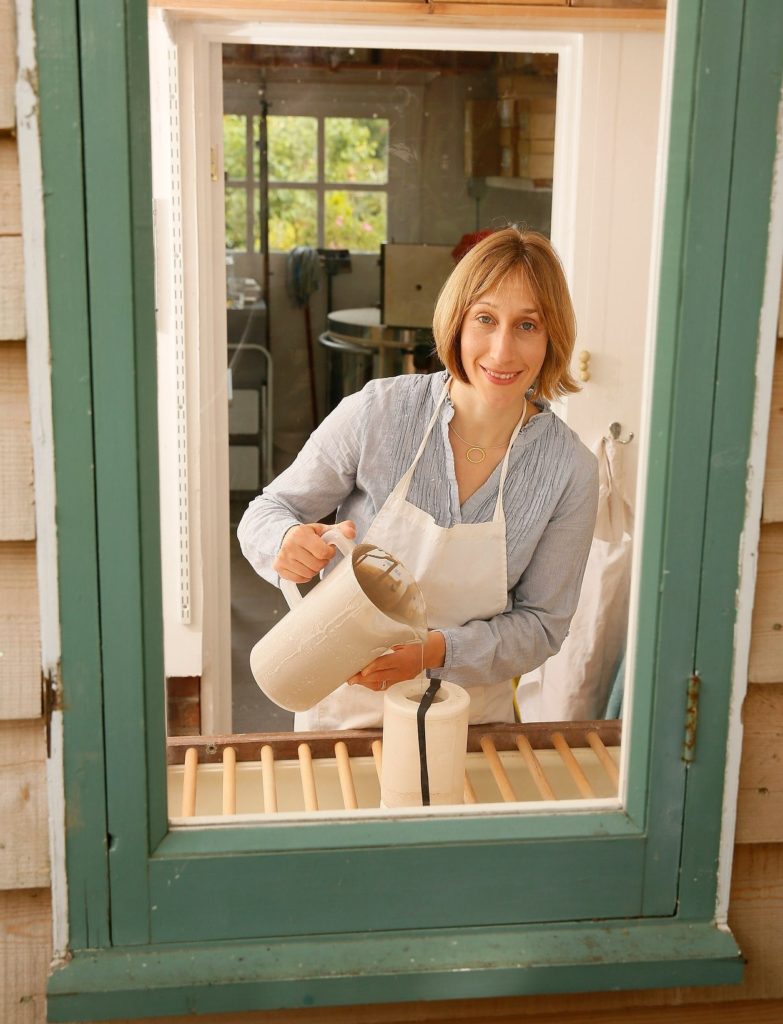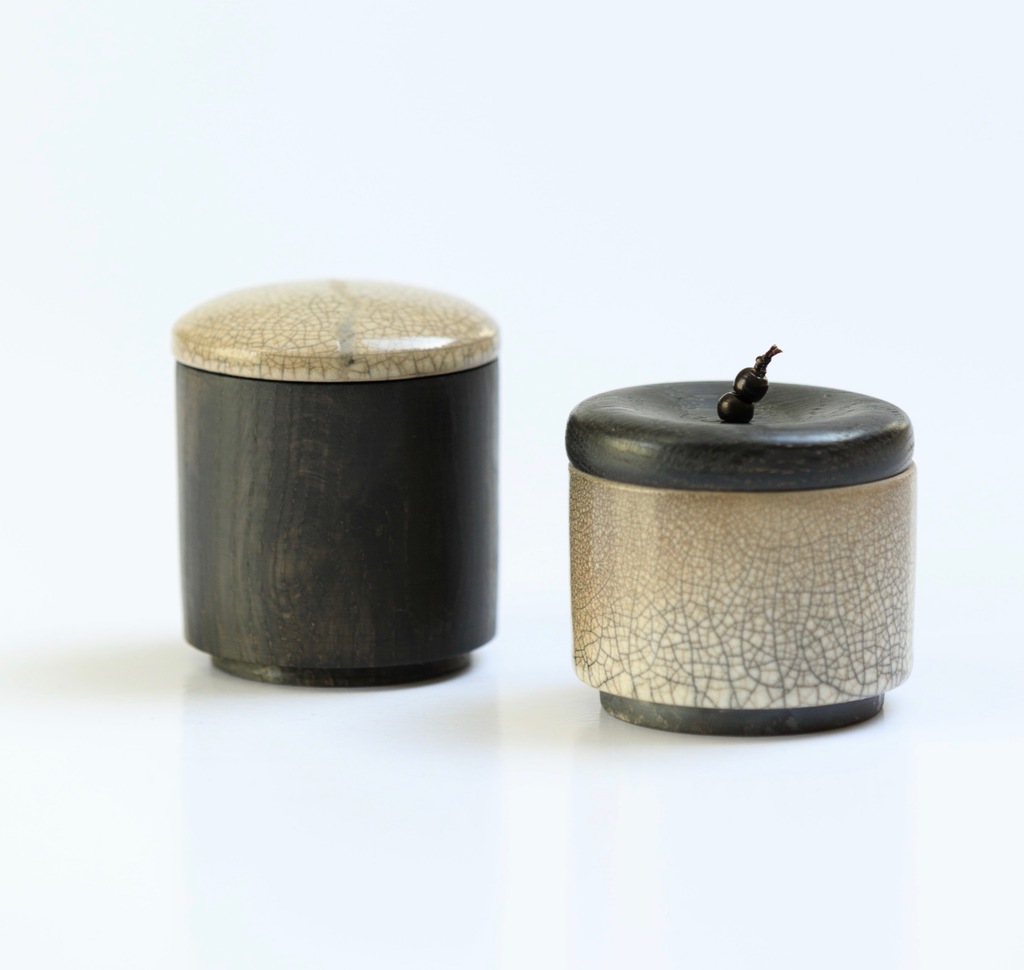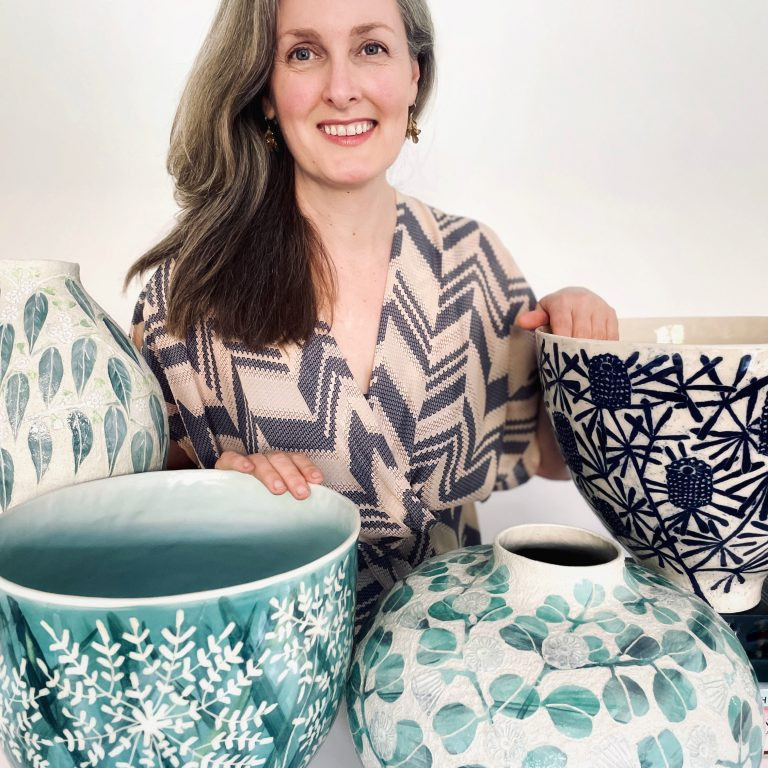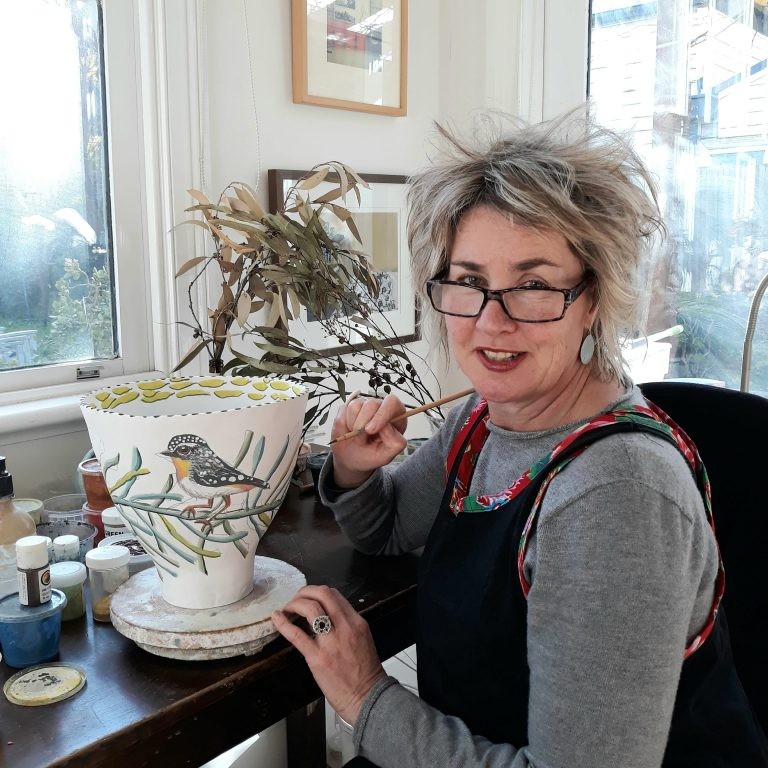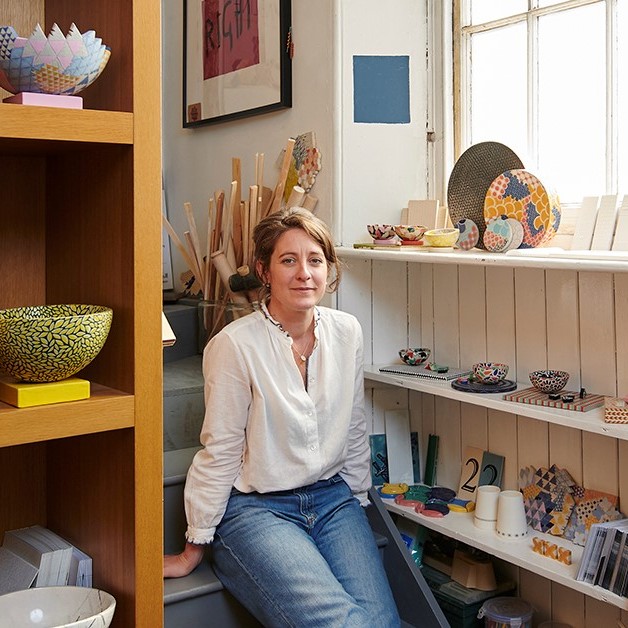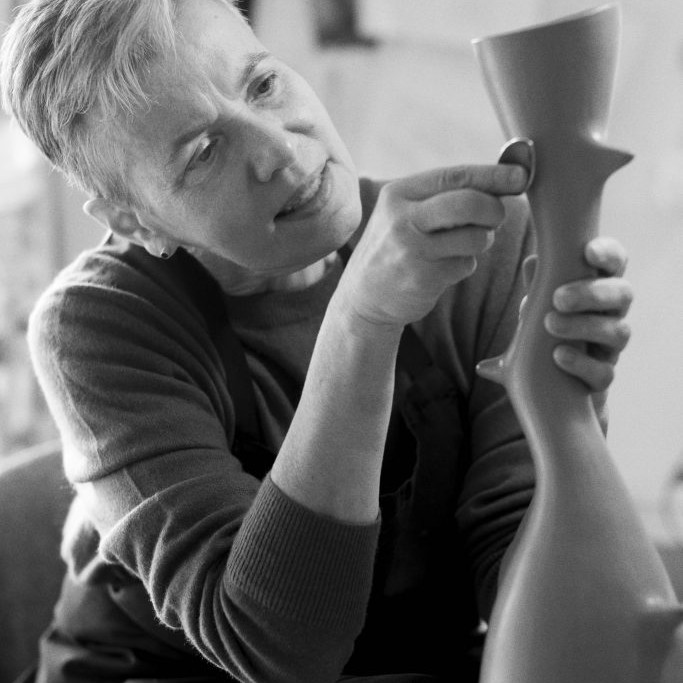Kate Schuricht Ceramic Artist
On completion of your Three Dimensional Design degree you participated in a ceramic residency in Japan. How did your time in Japan influence and continue to influence your ceramics?
On the residency programme, there were international potters and ceramic artists of all ages and stages of their careers, so I was exposed to many different creative styles and influences. Amongst the participants were production potters (who were used to throwing 50 + pots a day), sculptors, conceptual artists, tutors and recent graduates. We were all shown traditional Japanese making techniques by renown Japanese potters and encouraged to use the local materials, which proved to be quite a challenge for us! Although we were all taken out of our comfort zone, we were also able to develop our own work, which I was keen to do. I was already making work with quite an oriental aesthetic, so I continued to draw on those sources of inspiration, which were now really close at hand.
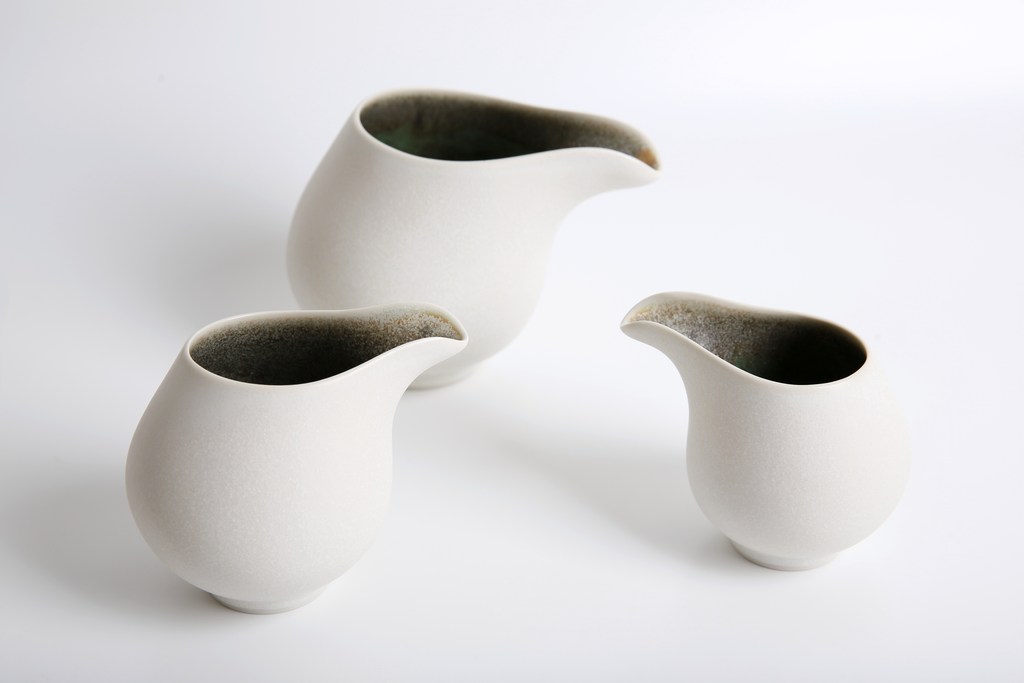 Flow, Sea green, Photo, Stuart Conway
Flow, Sea green, Photo, Stuart Conway
I think the most significant and long lasting influence that the residency had on me was being in the company of successful ceramic artists and hearing and seeing how they made their living. This opened my eyes to the real possibility of starting a business as a potter and gave me the confidence to follow my creative instincts.
Within 2 weeks of returning to the UK, I had a part time job with the Crafts Council and had taken up a studio space in a group studio complex called Cockpit Arts in London. I stayed there for nearly 10 years before leaving London for rural Kent.
What has been one of the assets of being a member of the Crafts Potters Association?
Like any society or association, there are many benefits of being part of the CPA, namely the mutual support and being part of a selected network of makers. However, it is also the opportunity to show work in the London gallery and see the work of other favourite potters at their shows. The CPA organise Ceramic Art London in March and The Oxford Ceramic Fair in October, which are both really good selling exhibitions with programmes of talks and demonstrations.
It was your use of form in your ‘Flow Jugs’ that first excited me about your work. Discuss this distinctive shape and how it evolved?
The Flow jugs first came in to being as part of an installation piece called ‘Cluster’, 2008, which was a series of 21 jugs in graduating sizes and tones made in raku. Some of the pieces had areas of subtle gilding on them and they progressed from pale to dark hues. The open jug shapes were very abstract at this stage and more about how they worked as part of the collective piece. However, there was such a good response to the form of the handless ‘Flow’ jugs that I then went on to make and sell them in pairs and trios. I later experimented with making them in stoneware so that they were a more functional piece and realised that there was great scope for experimenting with different interior and exterior colour
How many variations of Flow Jugs do you make?
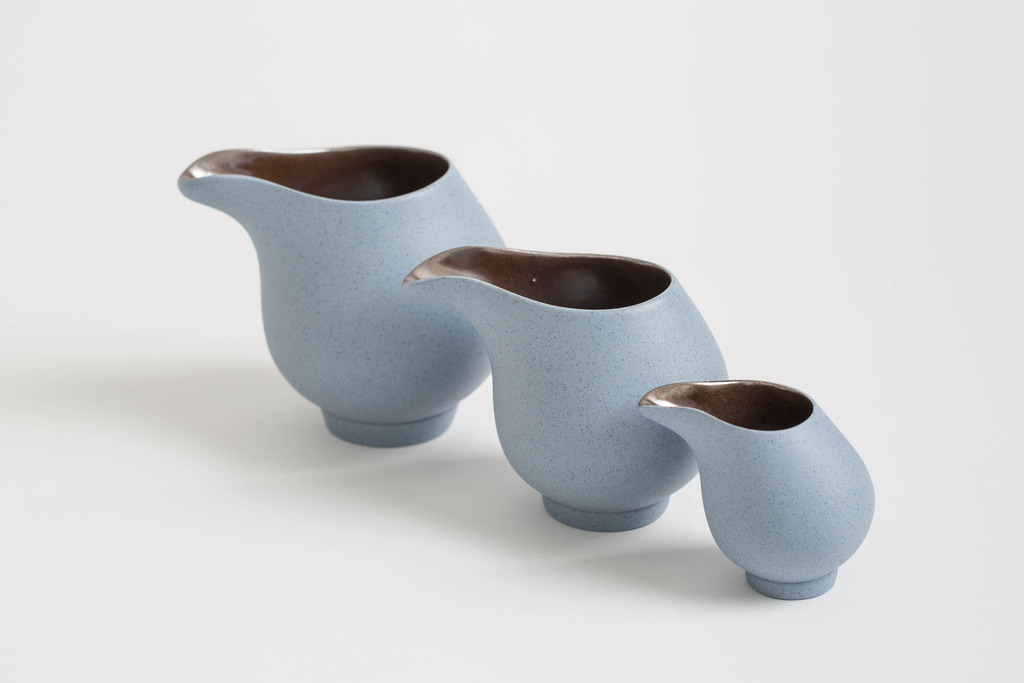
There are a total of 10 sizes of Flow jugs from the tiniest at just 5.5 x 5.5cm to the largest at 19 x 22 cm. I make them in raku (crackle glazes with alternating smoky / glazed interiors and exteriors) and also as functional jugs in stoneware with a white exterior and coloured interiors. I have recently started making the jugs in stoneware coloured clays in subtle tones of blues, greens, greys, black and white, all with a contrasting dark lustre interior. These are my latest obsession, as I love playing with the colour combinations and different groupings. I also really like the dramatic effect that the interior lustre has on the pieces.
Does the actual shape help the pouring of the jugs?
Originally, the pieces were more of a sculptural form, so they were not really designed with function in mind. When I went to glaze the pieces by pouring and dipping the glaze, I realised that the extended spout was excellent for pouring. This is not always easily achieved in ceramics, so I was delighted that they worked so well.
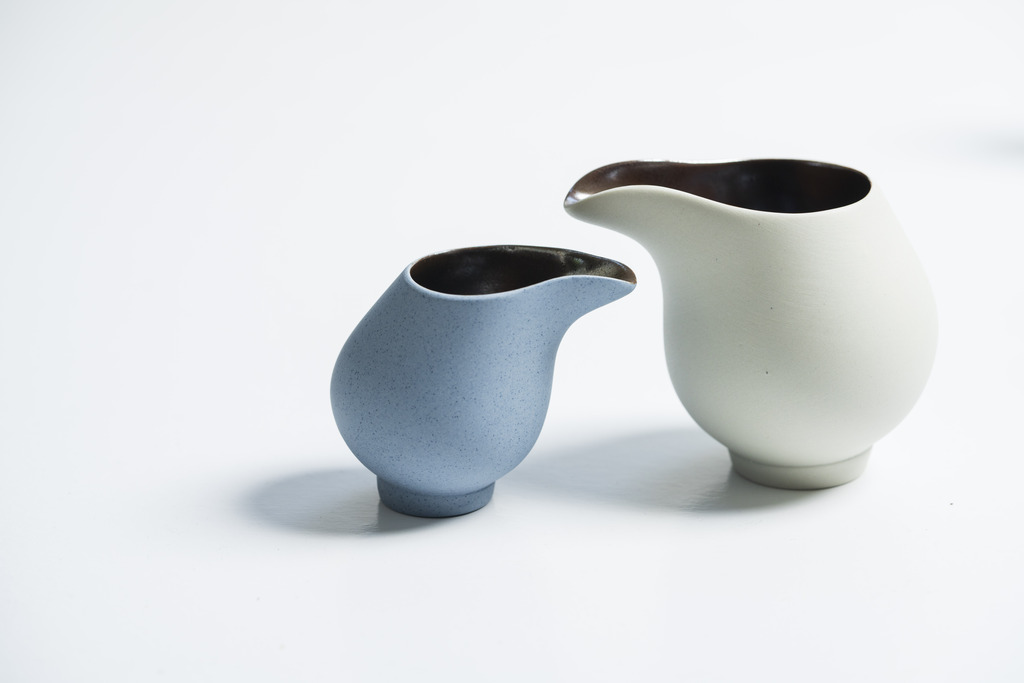 Flow, Lustre, Cornflower and white pair 2020, Photo, Justin Sutcliffe
Flow, Lustre, Cornflower and white pair 2020, Photo, Justin Sutcliffe
In ‘Tapered Vessels’ you introduce gradients of colour – comment.
I like the idea of making pieces that are all a little bit different, which is one of the reasons that I am so drawn to raku firing where there is endless variation in the finish.
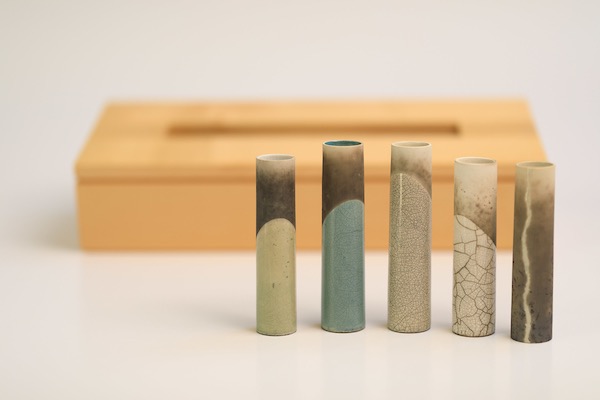
Revelations boxed set of tapered vessels, Photo, Stuart Conway
When I make the pieces in stoneware, I layer the glazes when I dip them, which gives interesting effects. By changing the order of the glaze layering, the results can be quite subtle and the gradients of colour are really beautiful. This is a bit like the effects of a Sea Mist on the horizon (hence the names Sea Mist, Night Mist and Horizon for the range). This technique works especially well on the Tapered Vessel range and can create eye catching groupings.
What led to you writing, ‘Revelations In Clay’?
I was fast approaching my twentieth year of working with clay, so I felt that I needed to document two decades of ceramics and explaining a bit about the influences behind my pieces. I often sell my ceramics in sets or collections and wanted to use the book as a way of showing clients and gallery owners the range of work, my techniques and sources of inspiration. I have recently finshed the 6th edition of the book, bringing it up to date for 2020.
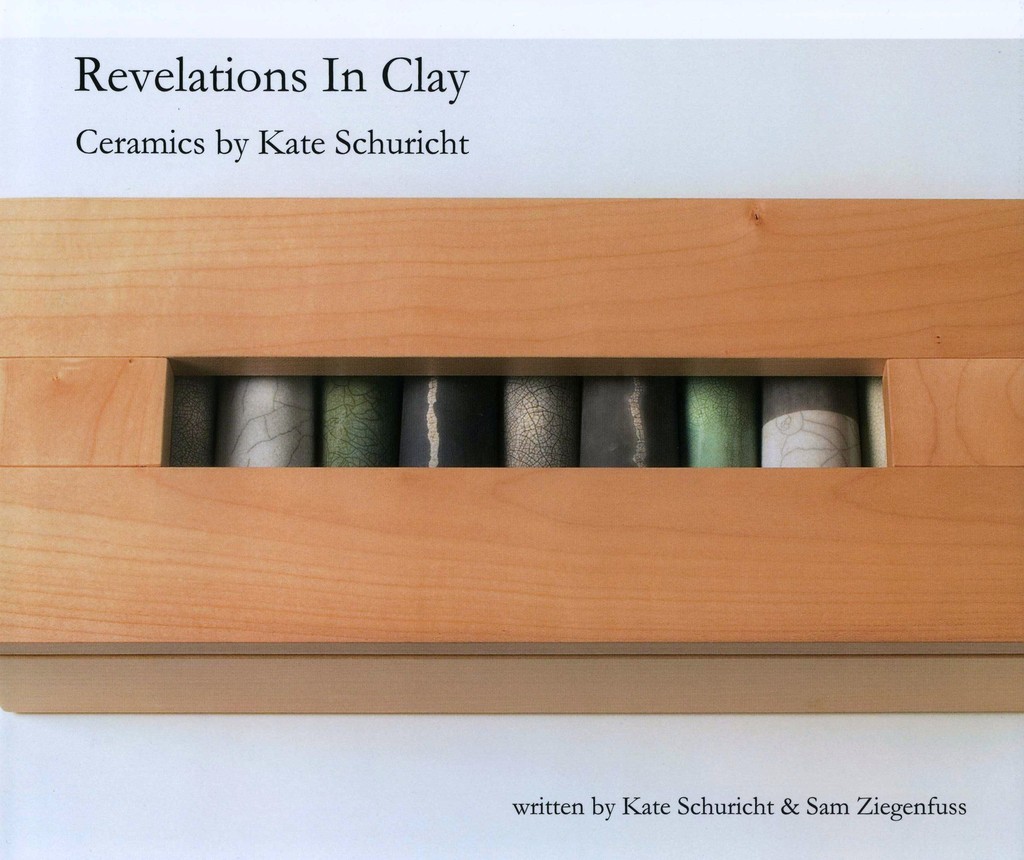 Revelations In Clay Book Cover, Photo, Stuart Conway
Revelations In Clay Book Cover, Photo, Stuart Conway
Discuss the collaborating with Sam Ziegenfuss and the writing of the book.
Working with Sam on the book was a fantastic experience and helped me to develop a new perspective on my work. It’s common for creative people to get too close to their subject and, as visual people, many artists find it difficult to effectively articulate the ideas behind their creations. However, by explaining it to another artist (Sam herself is a Fine Art graduate), there is a good opportunity for discussion and so many ideas to explore. Sam’s writing style was very fitting for my book and we worked closely together on all the text. As someone who often works alone, I really enjoyed having someone to bounce ideas off and to see her editing skills in action. I think we both got a lot out of the process.
You have an exhibition at Padstow Gallery for the 10th May 2020. How has the Corona Virus effected your exhibition?
Unfortunately, the May exhibition at Padstow Gallery (where I was due to show my ceramics with painters Claire Henley and Imogen Bone) has been postponed until further notice. It is such a shame for all of us, especially as May seems to be my best month for sales at the gallery!
Personally, how are your coping during the pandemic?
Emotionally
To start with, the whole concept of the pandemic was overwhelming and all-consuming and it took a while to steer ourselves through it as a family.
I think I have now settled in to a new sense of ‘normal’ and I am lucky enough to be able to continue to work from home. However, saying that, home is not the quiet refuge it used to be during the week, as three of us now work away on our various different tasks!
Financially
The financial implications of being a self employed artist with no gallery shows, retail exhibitions or master classes for the foreseeable future is quite a worry. I am fortunate to be able to continue to work from my home studio but with few retail opportunities, there is less call for making pieces. I suppose that there has never been a better time to get on top of paperwork and business planning as well as trying to find new ways to generate an income!
Creatively
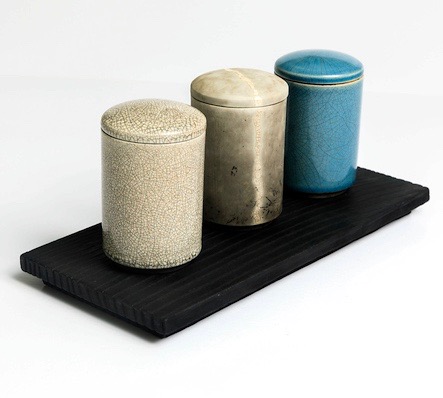
Terrain, Trio, Photo, Stuart Conway
I have seen so much productivity and creativity on social media and it is strange to not have been a part of that so far. I have been busy working on a 6 week project that will be finished next week, so it will be interesting to see how having the creative space and time to play affects my work.
The stillness of time at home now (with no school run, meetings, courses, shows) has been surprisingly welcome. It has taken this lockdown for me to realise how many balls I had been juggling and how short I had been on creative time in the studio. Not having looming deadlines has always been something I have yearned for, so it will be interesting to see what I do with my time.
Comment on your pieces as design objects.
Wall vases
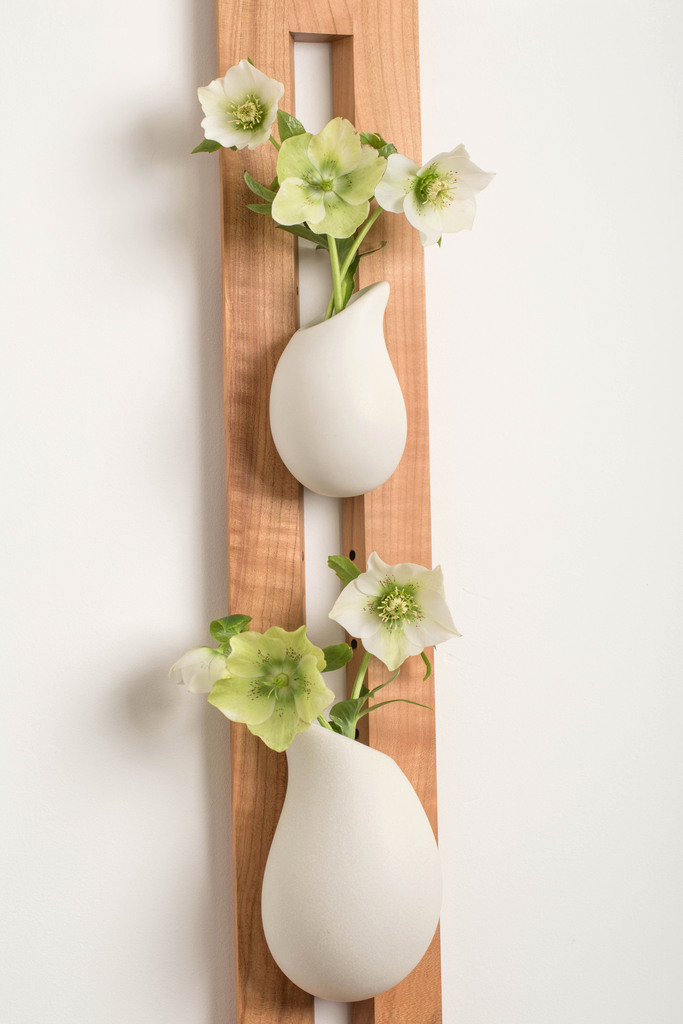
Detail of Droplet Framed Wall Vase, Photo, Justin Sutcliffe
The wall vases were designed in response to my love of nature and the idea of bringing garden flowers into the home setting. By displaying flowers on the wall rather than on a surface, they can have a great impact and can be used to dramatically change the way a space looks. The vases can be set at different heights within the wooden frames giving a flexible display and people have been really taken by this idea. Offering a variety of types of wood and coloured vases allows customers to have a bespoke set for their home.
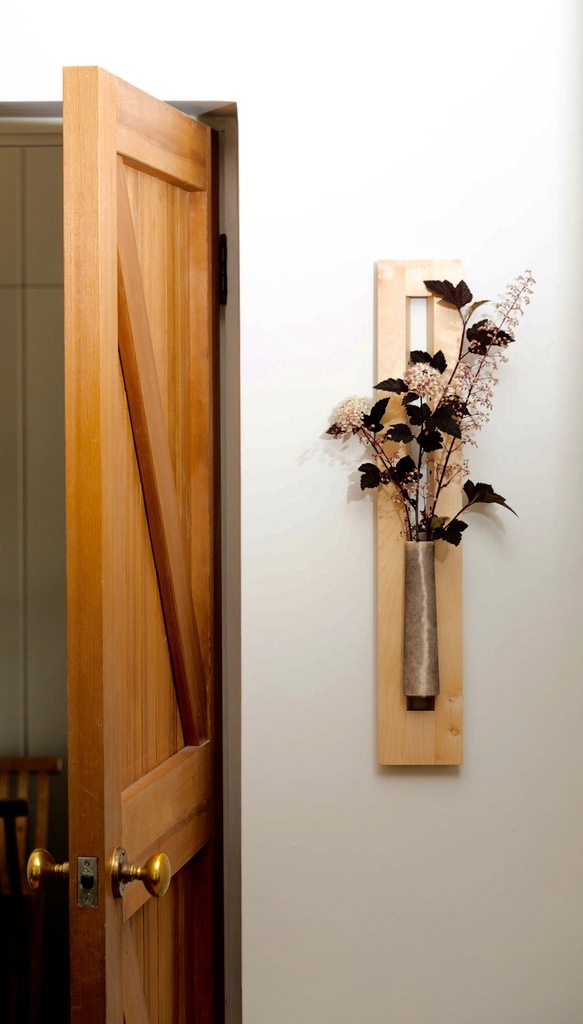
Sycamore, Wall Vase, Photo, Peter Greenhalf
Wall vases droplets
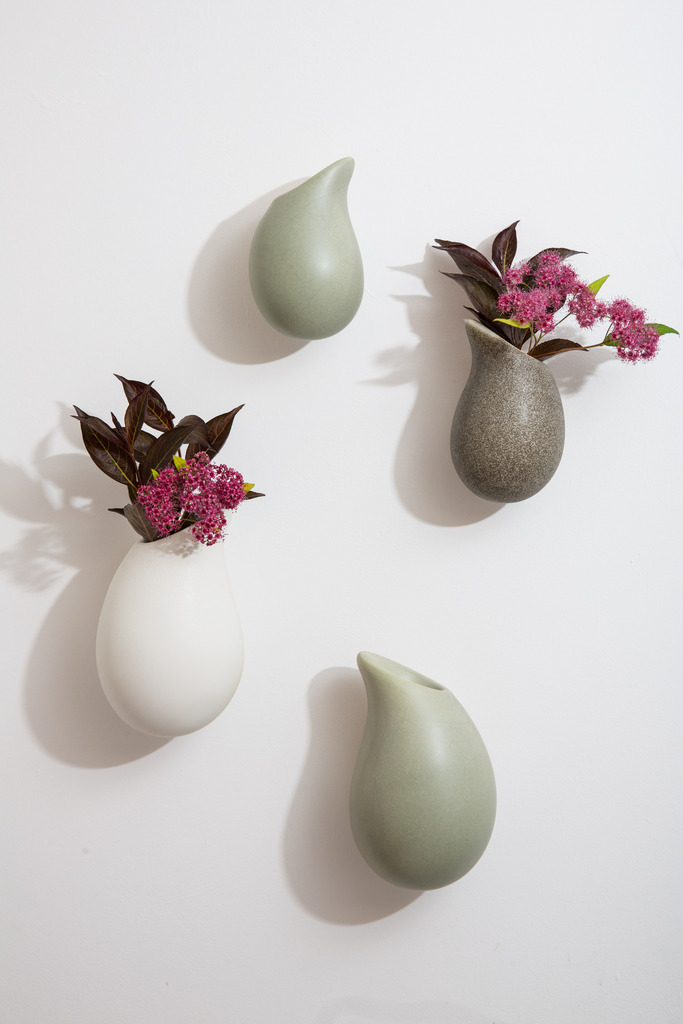
Droplet Wall Vases July 2013 (4), Photo, Stuart Conway
The Droplet wall vases came into being when I wanted to translate the idea of the ‘Flow’ jug into a vase for the wall. I liked the way the different sizes related to each other and wanted to create a variation in scale and position. To do this, I gave an option to have either left or right facing droplets. They have been really popular and customers have been very creative about where they place them, combining colours and sizes to great effect. I love to see ceramics on the wall and the choice to be able to put flowers in just adds to the statement. I would love to see a large wall display of Droplets in a hotel foyer or in an architect designed home.
Using pieces, can you take me briefly through your career using images of your work and the developments you have made.
My current range of work is a combination of my original Tapered Vessels and containers and my Flow jugs and Droplets. The pieces started out as simple cylindrical forms as the best way to show off the intricate crackles and crazing of the raku firing. As I grew more confident and experiemental, I started to design fuller forms like the Flow Jugs and Droplets and started making larger containers and more sculptural vessels. Around this time, I was expanding on my stoneware range and experimenting with interesting glaze finishes. My art has always been focused around the idea of collections, sets and groupings so this theme has always run through my work. I also like to combine ceramics with wood, as in the framed wall vases and the containers with wooden lids or bases.
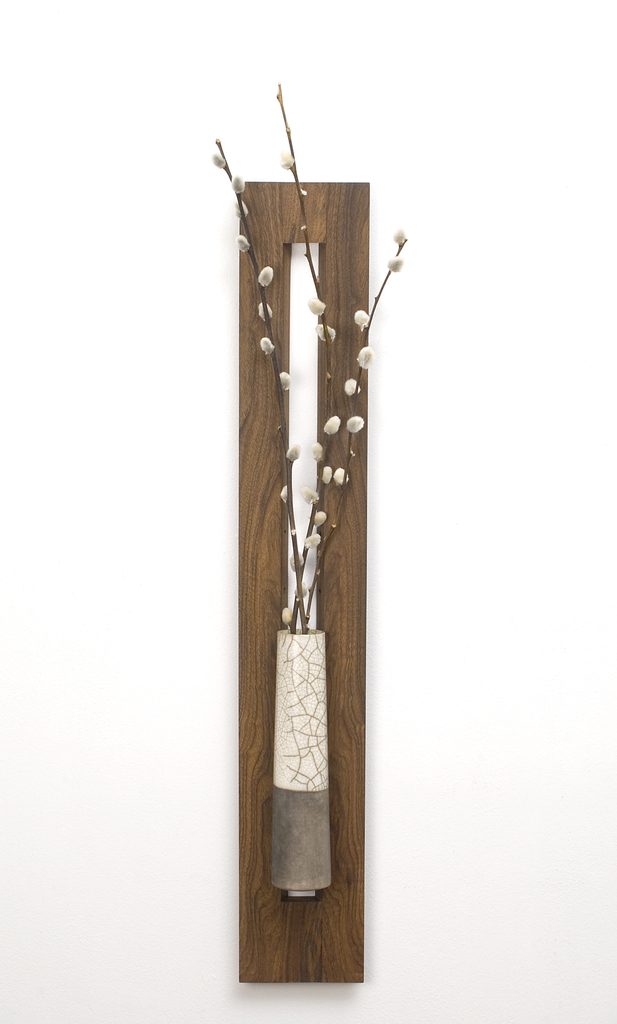
Raku Wall Vase (Walnut) , Photo, Peter Greenhalf
Comment on one of your commissions and how it has altered your career?
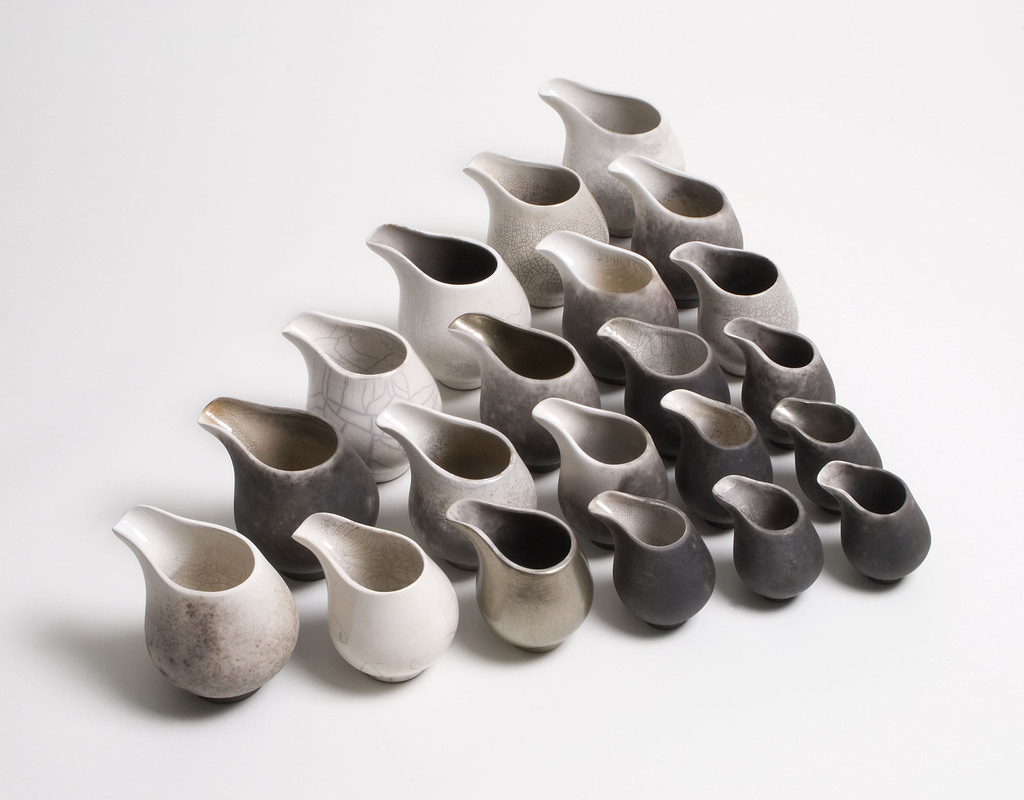
Cluster I, 2008. Raku and gilding, Photo, Stuart Conway
In 2013, I was commissioned by the Director of the Ceramic Art Museum, Ibaraki, Japan to make over 100 pieces as installations for the Cheongju International Craft Biennale in South Korea. It was the biggest project of this type that I had taken on and it was a fantastic opportunity to work on installations of this scale.
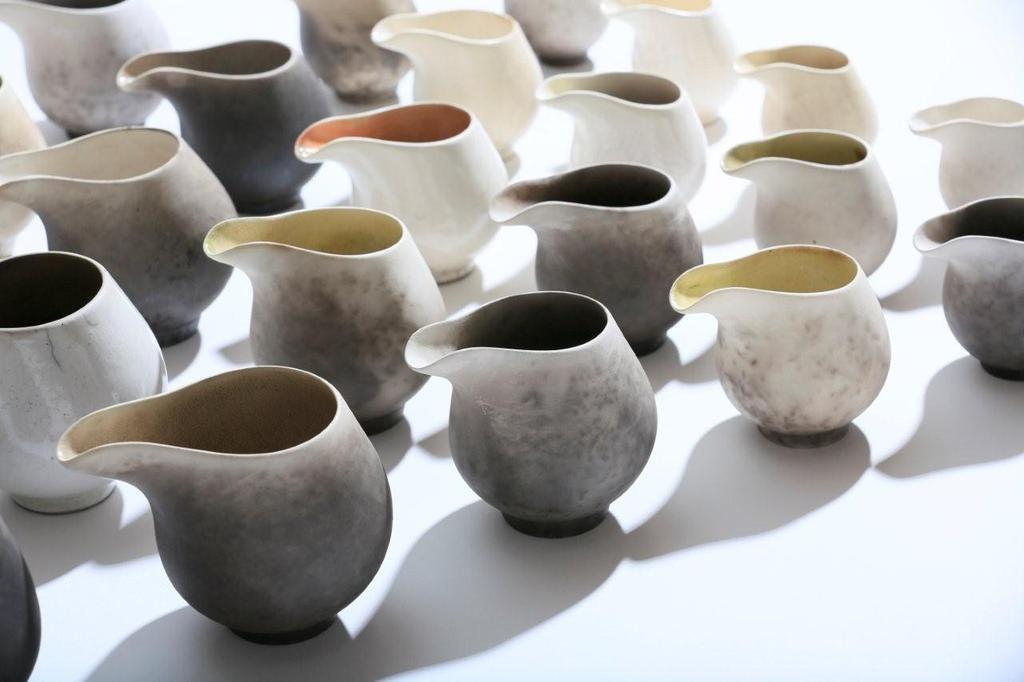
Cluster II, detail 2013,Photo, Stuart Conway
I had always wanted to develop my work in this way but needed the right space and context within which to show them. I spent many months on the pieces and the brief was flexible enough for me to experience plenty of creative freedom and a great sense of achievement. Cluster, II came about, as well as Lunar,
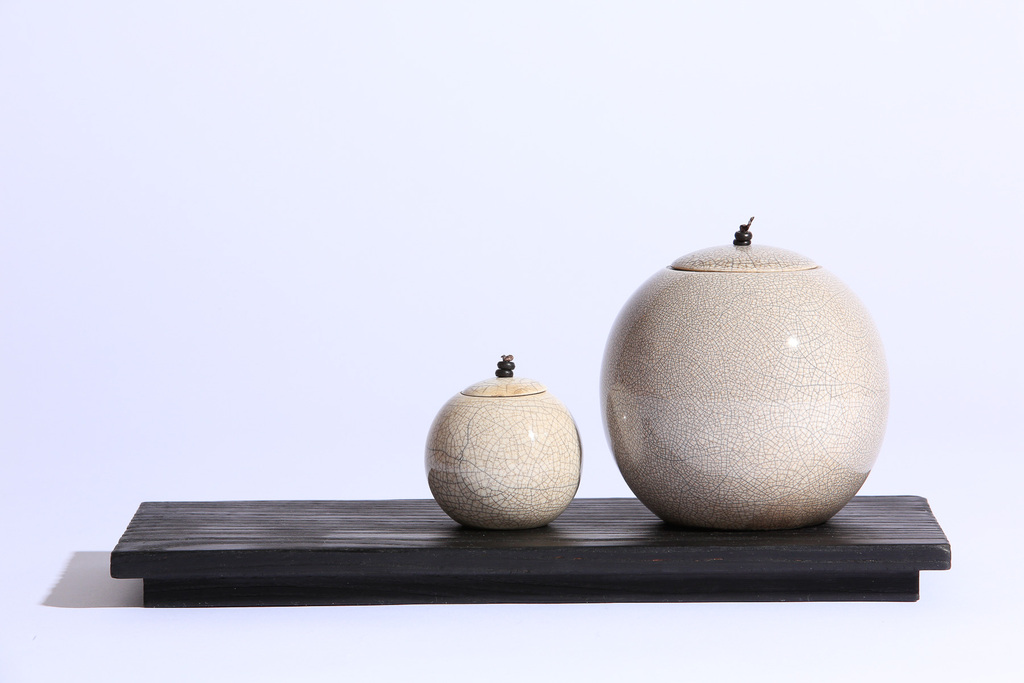
Lunar, Clear, Photo, Stuart Conway
and Ellipse installations and the work was really well received.
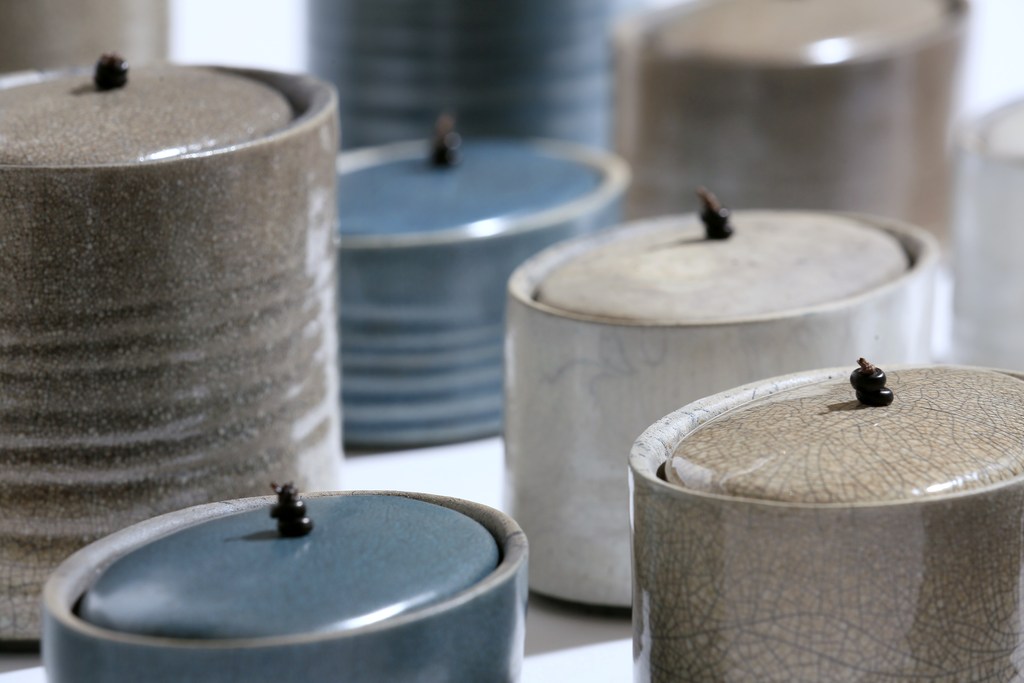
Ellipse, detail, Photo, Stuart Conway
You combine ceramics and wood, how has this evolved?
I studied wood and ceramics at University so working with wood has always been in my creative sphere. After leaving University, the opportunity to work with wood was non-existent so I have always commissioned other wood turners and furniture makers to make my designs. It’s a really interesting professional relationship to build, as there is so much that we can learn from each other and the various making processes can offer inspiration for future designs.
Who does your wood turning – also comment on this collaboration.
The woodturning for my pieces is done by Tom Pockley who is also a member of the Sussex Guild. We have often talked about ideas whilst attending Sussex Guild shows and it is always really nice to work with another local craft person. He currently makes lids for my pots (and conversely, pots for my lids) in a range of walnut and ebonised oak.
Ebonised oak and raku pots, Photo, Stuart Conway
Why do you find exhibiting such an important part of your work?
Having work on public show is good for getting feedback from the public and gallery owners and one of the best ways to showcase new work. Seeing the work in considered groupings within a neutral gallery space allows the artist to have a different perspective. Often work is made and then stored away without much time for reflection, so the opportunity to see pieces in a new light is great for the continued development of the work.
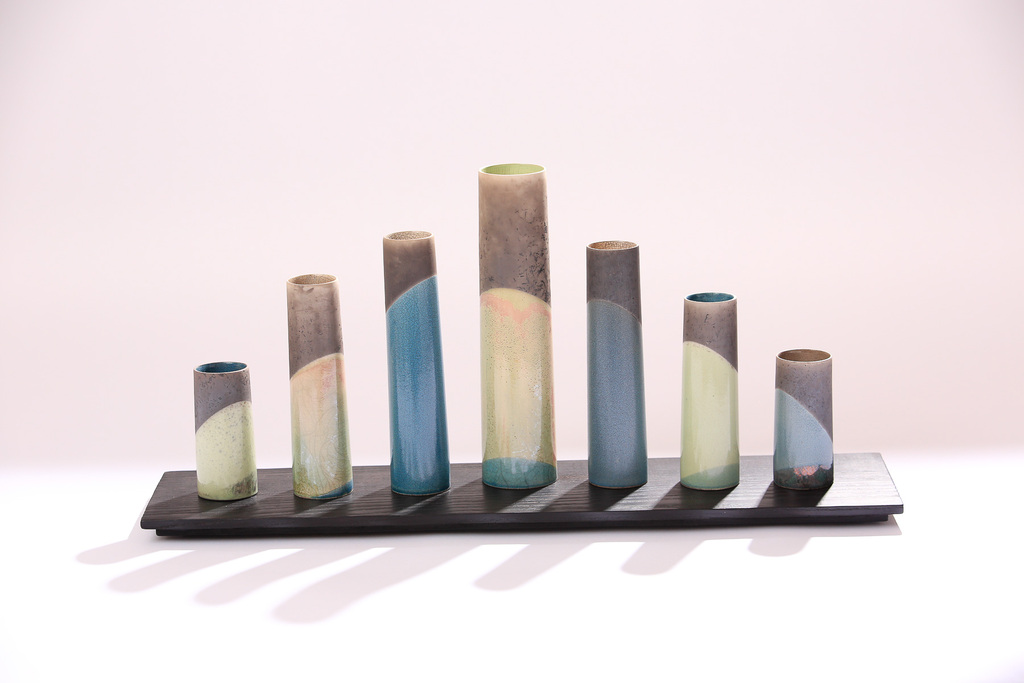
Where Land Meets Sea II, Photo, Stuart Conway
Where is your studio?
My studio is in my garden in Kent. It could do with being quite a bit bigger these days, as storage is an ongoing issue for me, but it is great to not have to worry about paying high rents any more!
Are there several aspects of your studio life that continue to give you overwhelming joy?
I simply enjoy making things with my hands and the touch of clay at it’s various stages from wet through to leather hard, dry and fired. I just get so much pleasure from it and it can almost send me into a meditative state as I work. It doesn’t seem to matter whether I am finishing pieces, glazing or polishing work, I enjoy it all. There is such satisfaction from making something from seemingly nothing, just a bit of mud and minerals!
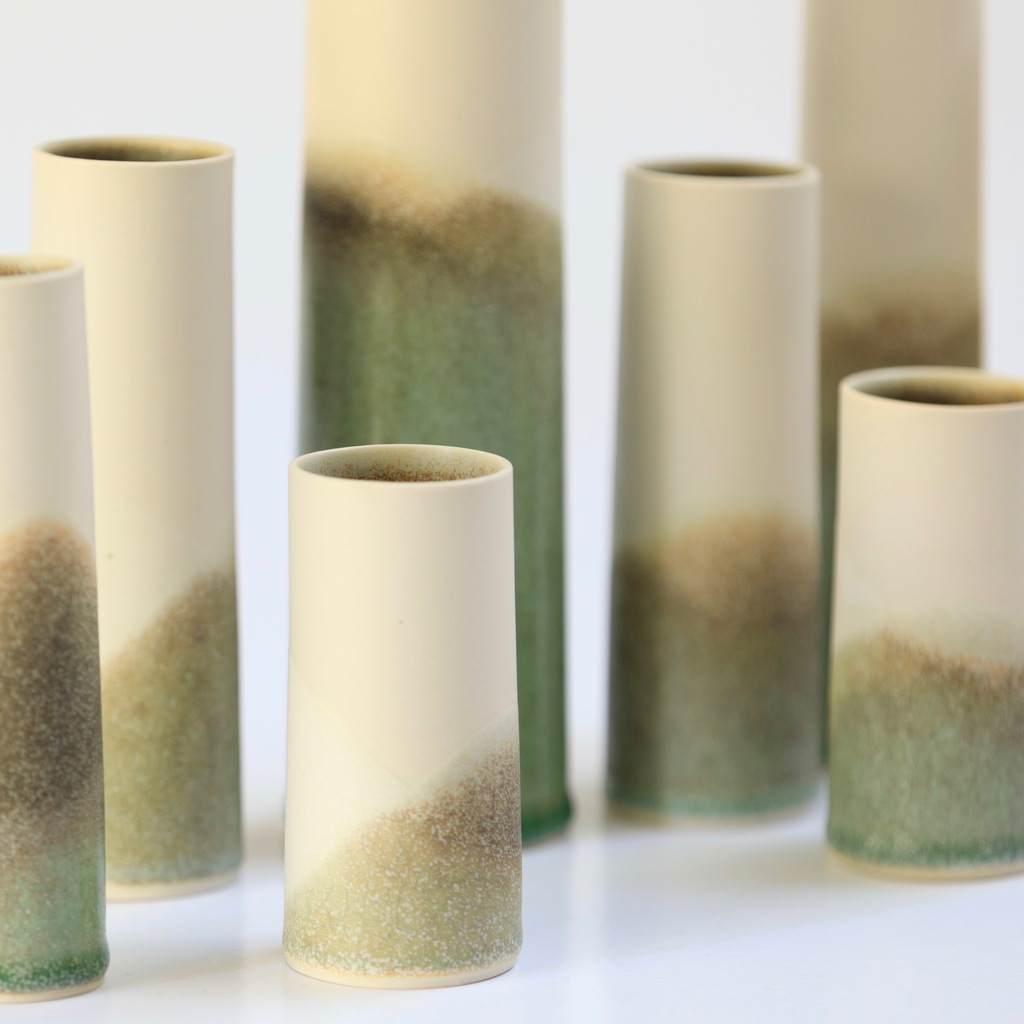
North Downs, Detail, Photo, Stuart Conway
You use several methods of clay firing, discuss the different techniques and why you use these differing techniques (with images)
I am probably best known for my raku ware. Raku is a low temperature smoke firing technique. Glazed pieces are fired outdoors in a gas fired kiln and taken rapidly up to 1000 degrees Celsius. At this point, the kiln is opened and the pieces are removed using tongs and heatproof gloves and quickly plunged into metal containers filled with sawdust. The sawdust burns the unglazed areas black with smoke and delineates the crackles in the glaze with intricate and random smoky lines. It is a really distinctive effect and no two pieces are exactly the same.
Stoneware firing is, by contrast, a very high firing technique. I use an electric kiln to fire pieces to 1260 degrees Celsius and there can be some lovely glaze effects at this temperature. Stoneware pieces are watertight and functional whereas raku pieces are purely decorative due to the crackle glazes not being watertight.
Discuss the Asian influence in your containers.
Ever since early childhood I have had a fascination with boxes and containers. My grandparents had a set of Russian dolls that I was allowed to carefully play with, as well a Japanese tea caddy and a pair of turned ebony and ivory boxes, all of which I now own. My love of containers most certainly came from those formative years. When I first visited Japan as a student in 1994, I was inspired by the wide range of traditional Japanese boxes and all the different functions they fulfill. I love the ritual of storing, collecting and organising things and this can be clearly seen in my work.
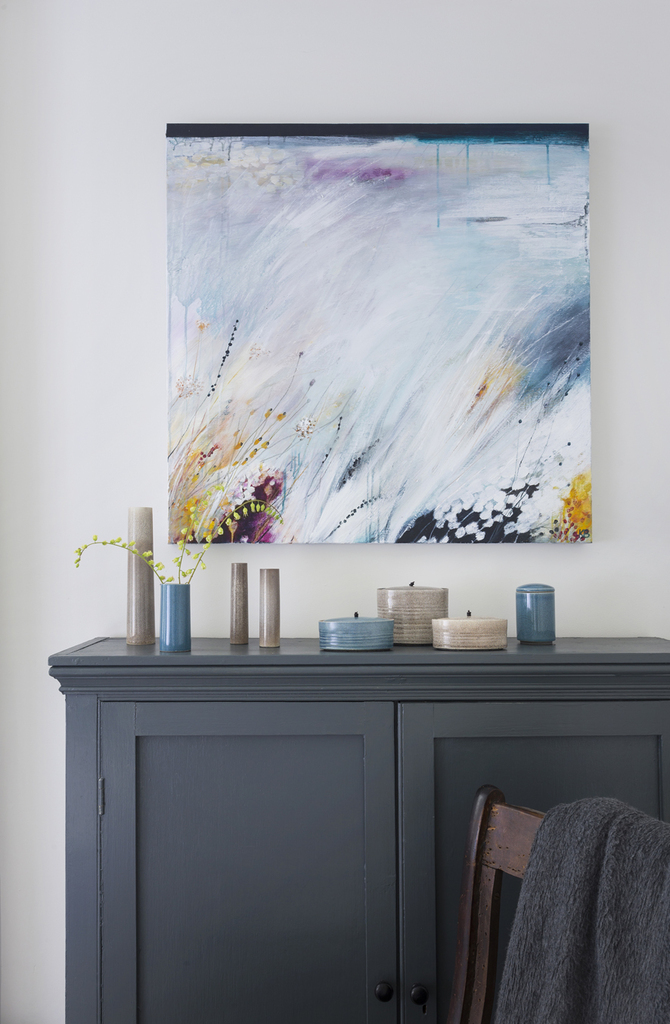
Contact:
Kate Schuricht
Instagram @kateschuricht
Tel 07786 576 039
Deborah Blakeley, Melbourne, Australia
Interview by Deborah Blakeley, May 2020
Think a colleague or friend could benefit from this interview?
Knowledge is one of the biggest assets in any business. So why not forward this on to your friends and colleagues so they too can start taking advantage of the insightful information the artist has given?
Other artists you may be interested in:


